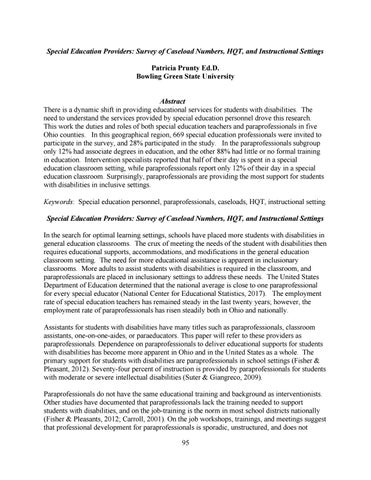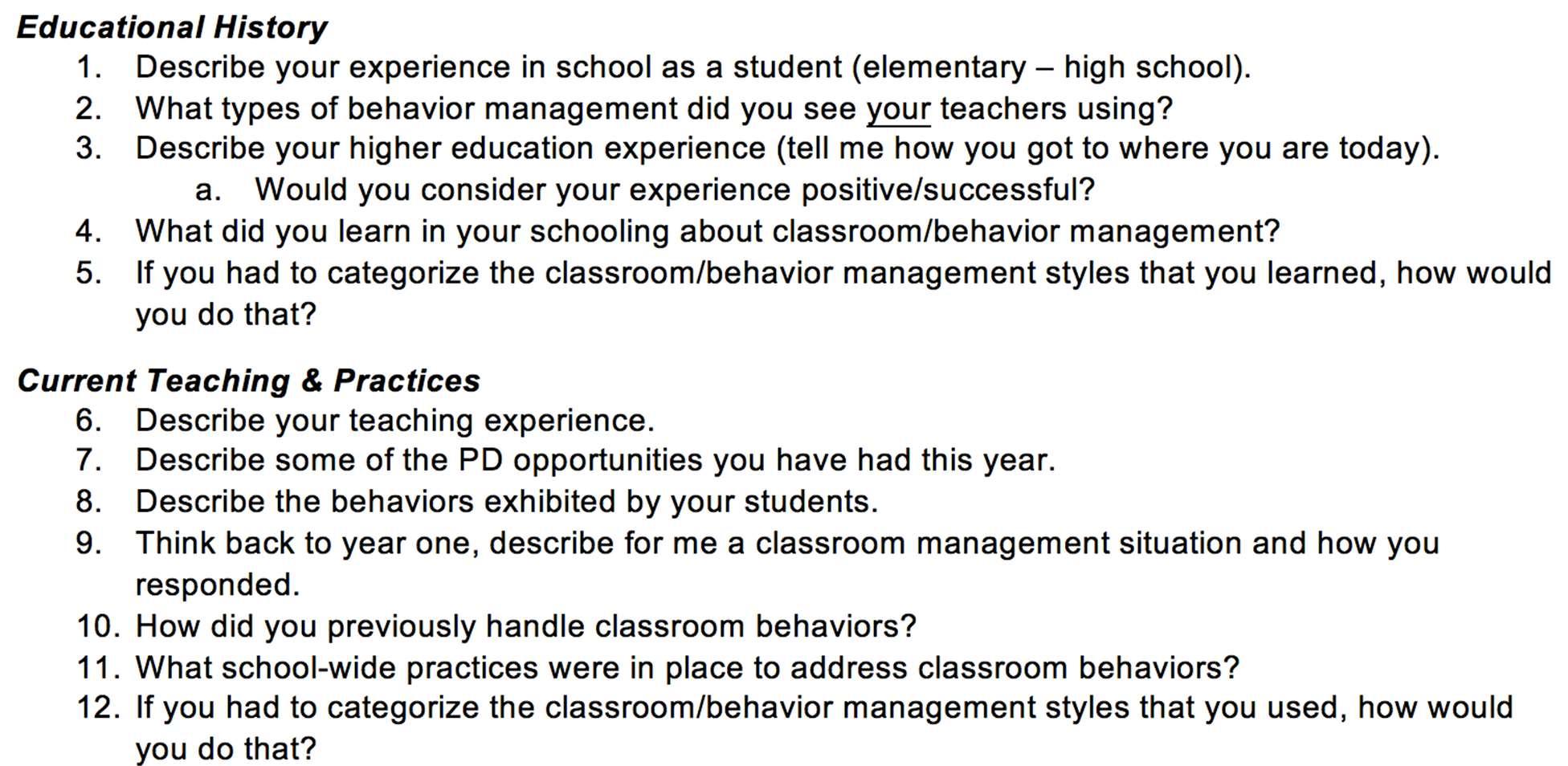Special Education Providers: Survey of Caseload Numbers, HQT, and Instructional Settings Patricia Prunty Ed.D. Bowling Green State University Abstract There is a dynamic shift in providing educational services for students with disabilities. The need to understand the services provided by special education personnel drove this research. This work the duties and roles of both special education teachers and paraprofessionals in five Ohio counties. In this geographical region, 669 special education professionals were invited to participate in the survey, and 28% participated in the study. In the paraprofessionals subgroup only 12% had associate degrees in education, and the other 88% had little or no formal training in education. Intervention specialists reported that half of their day is spent in a special education classroom setting, while paraprofessionals report only 12% of their day in a special education classroom. Surprisingly, paraprofessionals are providing the most support for students with disabilities in inclusive settings. Keywords: Special education personnel, paraprofessionals, caseloads, HQT, instructional setting Special Education Providers: Survey of Caseload Numbers, HQT, and Instructional Settings In the search for optimal learning settings, schools have placed more students with disabilities in general education classrooms. The crux of meeting the needs of the student with disabilities then requires educational supports, accommodations, and modifications in the general education classroom setting. The need for more educational assistance is apparent in inclusionary classrooms. More adults to assist students with disabilities is required in the classroom, and paraprofessionals are placed in inclusionary settings to address these needs. The United States Department of Education determined that the national average is close to one paraprofessional for every special educator (National Center for Educational Statistics, 2017). The employment rate of special education teachers has remained steady in the last twenty years; however, the employment rate of paraprofessionals has risen steadily both in Ohio and nationally. Assistants for students with disabilities have many titles such as paraprofessionals, classroom assistants, one-on-one-aides, or paraeducators. This paper will refer to these providers as paraprofessionals. Dependence on paraprofessionals to deliver educational supports for students with disabilities has become more apparent in Ohio and in the United States as a whole. The primary support for students with disabilities are paraprofessionals in school settings (Fisher & Pleasant, 2012). Seventy-four percent of instruction is provided by paraprofessionals for students with moderate or severe intellectual disabilities (Suter & Giangreco, 2009). Paraprofessionals do not have the same educational training and background as interventionists. Other studies have documented that paraprofessionals lack the training needed to support students with disabilities, and on the job-training is the norm in most school districts nationally (Fisher & Pleasants, 2012; Carroll, 2001). On the job workshops, trainings, and meetings suggest that professional development for paraprofessionals is sporadic, unstructured, and does not 95
2020 Special Education Research, Policy, & Practice

Issuu converts static files into: digital portfolios, online yearbooks, online catalogs, digital photo albums and more. Sign up and create your flipbook.



